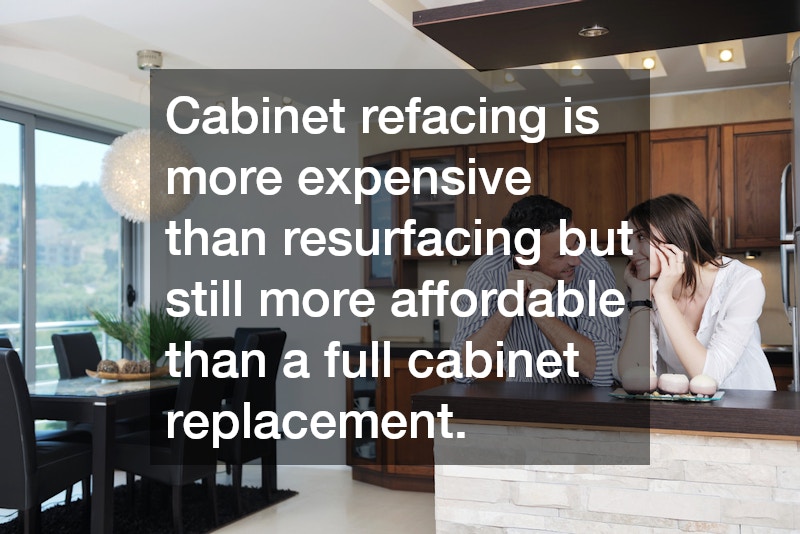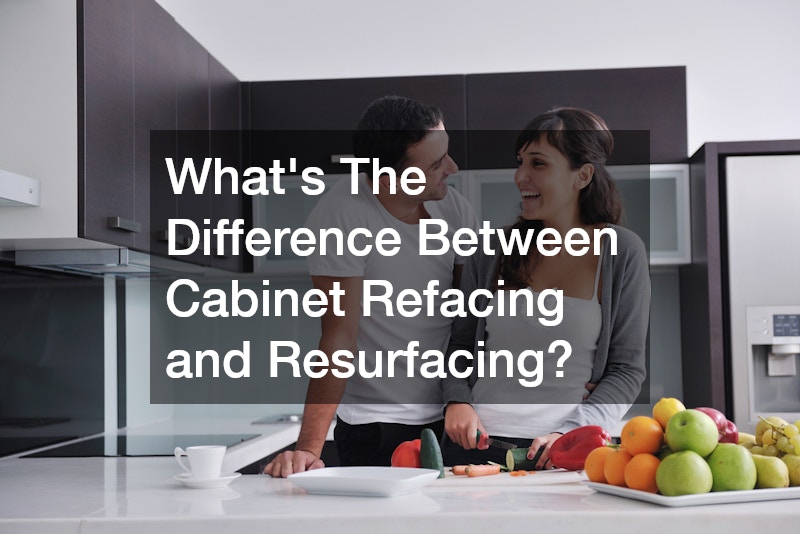
When it comes to kitchen renovations, homeowners often explore different ways to update the look and functionality of their cabinets without going through a full remodel. Two common terms that often come up are “cabinet refacing” and “cabinet resurfacing.” While these two processes may sound similar, they have distinct differences in terms of method, cost, and results. If you’re considering cabinet refacing in West Chester PA, or want to know more about these two renovation options, this blog will explain the key differences and help you determine which option is best for your kitchen.
What Is Cabinet Refacing?
Cabinet refacing is a process where the outer layer of your existing cabinets is replaced with new materials, while the cabinet boxes (the structural part of your cabinets) remain intact. The process typically involves replacing the cabinet doors, drawer fronts, and hardware, while applying a new veneer to the visible parts of the cabinet boxes to match the new doors.
Refacing is an excellent option if your cabinet boxes are still in good condition but you want to give your kitchen a completely new look. With cabinet refacing in West Chester PA, homeowners can choose from a wide range of materials, colors, and styles, allowing for a personalized, refreshed appearance without the time and cost of a full cabinet replacement.
What Is Cabinet Resurfacing?
Cabinet resurfacing, on the other hand, generally refers to the process of updating or restoring the surface of your existing cabinet doors and drawers without replacing them. This can involve sanding, painting, or staining the current doors and drawers to give them a fresh, updated look. Resurfacing doesn’t involve replacing the cabinet doors or drawer fronts like refacing does; instead, it simply restores or changes the appearance of the existing materials.
Resurfacing is typically a less expensive option than refacing because it involves fewer materials and less labor. However, the results may not be as dramatic or long-lasting as refacing, especially if your cabinets are old or worn. Resurfacing is often chosen by homeowners who are looking for a quick, budget-friendly update to their cabinets.
The Differences Between Cabinet Refacing and Resurfacing
While both refacing and resurfacing are viable options for giving your cabinets a makeover, there are several key differences between the two processes:
1. Scope of Work
The primary difference between cabinet refacing and resurfacing is the scope of the work involved. Refacing involves replacing the cabinet doors, drawer fronts, and applying a new veneer to the cabinet boxes. This process gives your cabinets a completely new appearance with new materials. It’s essentially like getting new cabinets without replacing the entire structure.
Resurfacing, on the other hand, involves working with the existing materials. The current cabinet doors and drawer fronts are sanded down, repainted, or stained. In some cases, the cabinet boxes may also be painted or stained to match, but no new materials are added.
2. Appearance and Customization
Cabinet refacing offers more customization and design options compared to resurfacing. With refacing, you can choose from a wide variety of materials, such as wood veneer, laminate, or thermofoil, in various colors and finishes. You also have the option to replace your cabinet hardware (such as handles and knobs) with modern alternatives, further enhancing the look of your kitchen. Refacing can give your cabinets a completely new look that feels like a kitchen transformation.
Resurfacing, by contrast, limits your options to the existing materials. While you can change the color or finish of your cabinets, you’re still working with the same doors and drawers, which means the overall design and style of your cabinets remain the same. Resurfacing is a good option if you like the current style of your cabinets but want to freshen up their appearance with a new finish.
3. Durability
Because refacing involves replacing the cabinet doors and applying new veneer to the cabinet boxes, the end result is more durable and long-lasting than resurfacing. New materials like wood veneer or laminate are designed to withstand wear and tear for years, making refacing a good investment if you’re looking for a more permanent solution.
Resurfacing, while cost-effective, may not last as long, especially if your cabinets are already old or damaged. Paint and stain can wear down over time, especially in high-use areas like the kitchen. If you’re looking for a long-term solution, refacing may be the better choice.
4. Cost
Resurfacing is generally less expensive than refacing because it requires fewer materials and less labor. However, the lower cost comes with some trade-offs, such as limited design options and a shorter lifespan for the finished product.
Cabinet refacing is more expensive than resurfacing but still more affordable than a full cabinet replacement. For homeowners considering cabinet refacing in West Chester PA, refacing offers a balance between cost and results, providing a brand-new look without the expense of completely replacing your cabinets.
5. Time
Both refacing and resurfacing are quicker than a full cabinet replacement, but resurfacing tends to be the faster option since it involves less work. Resurfacing can often be completed in just a few days, whereas refacing may take a bit longer, depending on the size of your kitchen and the complexity of the project.
.




